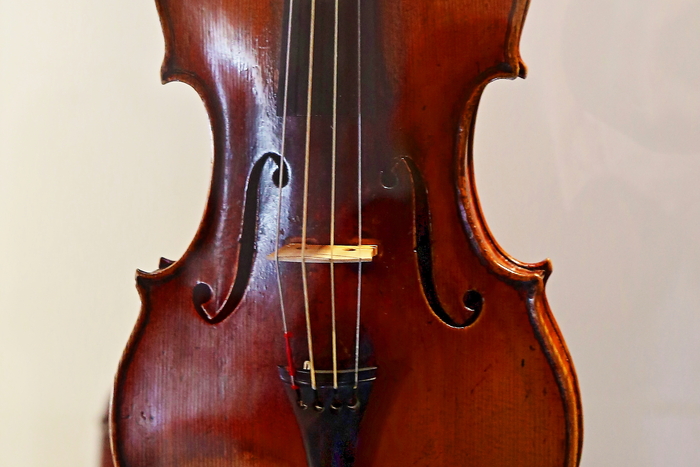The most famous violin in the world, the Cannone by Niccolò Paganini, 'is fine, the microfractures are under control': Bruce Carlston, curator of the instrument with Alberto Giordano and Pio Montari, told ANSA from the European laboratory for light synchrotron, the ESRF in Grenoble. Presented here today are the results of the analyzes conducted on the instrument with techniques capable of examining its internal structure with the greatest detail ever and in a non-invasive way.
"The microfractures are there, but they are not a situation that requires intervention.
The violin is fine", said Carlston again. "All old instruments - he continued - have something". Built in 1743 by the luthier Bartolomeo Giuseppe Guarneri, known as 'del Gesù', the Cannon adds to the problems of age those linked to accident which occurred in Paris and following which the instrument was restored. "We suspected that the restoration had been a bit weak, but - Carlston said - the analysis showed that this was not the case". For the instrument "periodic checks" will therefore be sufficient. The Cannine "can therefore be played again, once a year" as per tradition.
The ESRF light is the most powerful synchrotron light in the world and, thanks to its new Extremely Bright Source, has been providing experimental performance at least 100 times better than before since 2020. This capability, combined with those of the new BM18 beamline, offers an unprecedented ability to reconstruct a 3D X-ray image of the entire violin at the level of the cellular structure of the wood, with the possibility of zooming locally at any point, up to the micrometric scale.
Consequently, the experiments conducted at ESRF provide a complete three-dimensional view of the state of conservation of the violin, but also a super-precise representation of the details of the violin's structure and the complete map of the interventions made in the past by luthiers.
The violin will now be able to return to Genoa, the city to which Paganini had donated his violin and where since 1851 it has been preserved in the Municipality headquarters, in Palazzo Tursi, in a case with a controlled microclimate.
The analyzes were conducted at ESRF in collaboration with the Municipality of Genoa and Premio Paganini.
Together, they defined the analysis protocol.
For the director general of the ESRF, Francesco Sette, "the study on 'Il Cannone' is a wonderful example of the ESRF's non-destructive 3D X-ray imaging techniques which allow qualitative progress in understanding how this precious artefact is made , a fundamental step for its conservation for future generations."
The mayor of Genoa Marco Bucci is satisfied, for whom the analysis conducted with synchrotron light is an "extraordinary event" which "intertwines culture, science, history and music around the most famous violin in the world which Paganini himself chose to entrust to our city, to preserve it forever."
The analysis was conducted "as part of an unprecedented international cooperation focused on excellence and distinction," said the president of the Paganini Prize, Giovanni Panebianco.
Barbara Grosso, general director of the Municipality of Genoa, observes that after this verification of his state of health, "Paganini's Cannon can more often excite enthusiasts from all over the world and be an ambassador of our city".
For the violin conservators, Carlson, Giordano and Montari, the analyzes conducted at the Esrf "one of the most important events in the second life of the 'Cannone'; for us conservators, working with such a team of scientists and with such fantastic equipment It is an unforgettable experience. It is a starting point for a better understanding of this unrepeatable and very mysterious violin."
Working on Paganini's violin was a dream come true for ESRF researcher Paul Tafforeau, responsible for BM18: "I hope that this experiment is the first of a long series. In a few months - he added - we will be able to work on instruments much larger, up to the size of a double bass".
Reproduction reserved © Copyright ANSA

